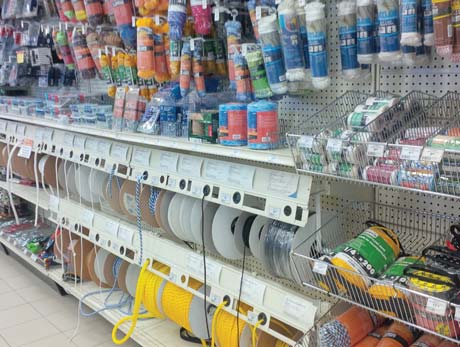 Traditional skills are still required on board
Traditional skills are still required on board
A few years ago this column presented some comments on rope and line handling on board your boat. As boating has changed over the years and technology has improved, many traditional boating skills are being replaced, lost and forgotten.
Engine maintenance and navigation, formerly skills that required study and practise, have been overrun by micros chips and technicians. Basic boat handling is slowly being overtaken by computers, satellites, and joy-sticks. Chemicals have made regular hull maintenance a breeze.
For traditionalists, the range of gadgets on board modern boats has turned boating into much less of a hobby. Where in the past you had to develop a wide-range of skills before you ventured out on the water, you now only have to have a working knowledge of the manual and technicians available to assist when things fail.
One skill that may never be fully replaced – until mechanical arms or powerful magnets become part of boating – is basic rope and knot knowledge and line handling.
Besides learning to handle lines on board your boat, you should have some basic rope, line and knot knowledge so that when you purchase new lines or rope, you consider all factors. Over the next two columns we will take a look at some of the rudimentary knowledge you need in order to ensure your safety when using ropes and lines on board your boat.
First we have to look at the rope itself. There are a couple of practical types avail-able and they are manufactured from various products.
Traditionally rope was made of natural fibers such as manilla, hemp, cotton and sisal and you can still get this today – in fact manilla is often used in ships lines – but modern manufacturing and chemicals have replaced these with more practical alternatives. They cannot match the strength of man-made Aproducts of similar sizes but they are practical and easier to use.
Polypropylene is the least expensive and is often yellow in color but it does come in many colors. It floats so it is useful for tow ropes for waterskiing and as a dinghy painter. However, it has a hard surface that does not cling to cleats so it isn’t much use as a dock or towing line, and it is abrasive on hands. It also breaks down quickly from exposure to ultra-violet light.
Polyester rope wears better than polypropylene but it does not stretch much and it does not float. Dacron can be used for sailboat rigging and anchor lines where you don’t want stretch, but it chafes easily so it has to be protected and checked regularly for wear.
Nylon rope can stretch as much as 40 per cent and it is extremely strong. It wears well, does not float and resists rot but it can lose up to 25 per cent of its strength when wet. However, even accounting for this, it is much smaller than a similar strength natural rope.
Cutting any of these man-made fibre lines should be done with a heated cutting tool in order to seal the ends. The area to be cut should be temporarily bound with line or even tape so the ends do not fray while being cut. They can also be held over a flame after the fact, or dipped in a chemical sealing compound.
Synthetic lines are slipperier than natural fibre lines so knots should be checked to ensure they are secure. These lines should be stored dry and out of the sun and can easily be cleaned with mild deter-gent and water.
Rope types. There are two common types of rope used on board pleasure craft – three strand twisted rope and braided rope. Three strand twisted rope can be either right-hand or left-hand laid but this is not an important consideration in which one to use. To construct three strand braided rope fibres are twisted into yarn, yarns are twisted into strands, and strands are twisted in rope.
The fibres and strands are twisted in the same direction while the yarns are twisted in the opposite direction. This helps add strength and helps keep the lines from kinking while maintaining their shape.
Braided rope is the other type commonly used on pleasure craft. It does not stretch as much as twisted rope and it is much more difficult to splice. But, because of its shape it runs through blocks and pulleys well and is stronger than the same size twisted line. It can snag on rough pilings.
Braided rope comes in several different types: braid on braid which has a braided core providing less flexibility with little stretch; hollow braid, which has no core making it flexible but weak; parallel core which is braid over a core of yarns that can be straight or slightly twisted which is a very strong construction; and multi-braid which is made with two pairs of right and left hand laid strands producing a rope that is flexible and does not kink.
When purchasing rope to make into lines, or purchasing pre-made lines, you need to consider more than just length and use. Working strength, stretch and easy of handling also come into play.
In the next column we will look at some important knots that will help keep you and your boat safe.


 Traditional skills are still required on board
Traditional skills are still required on board